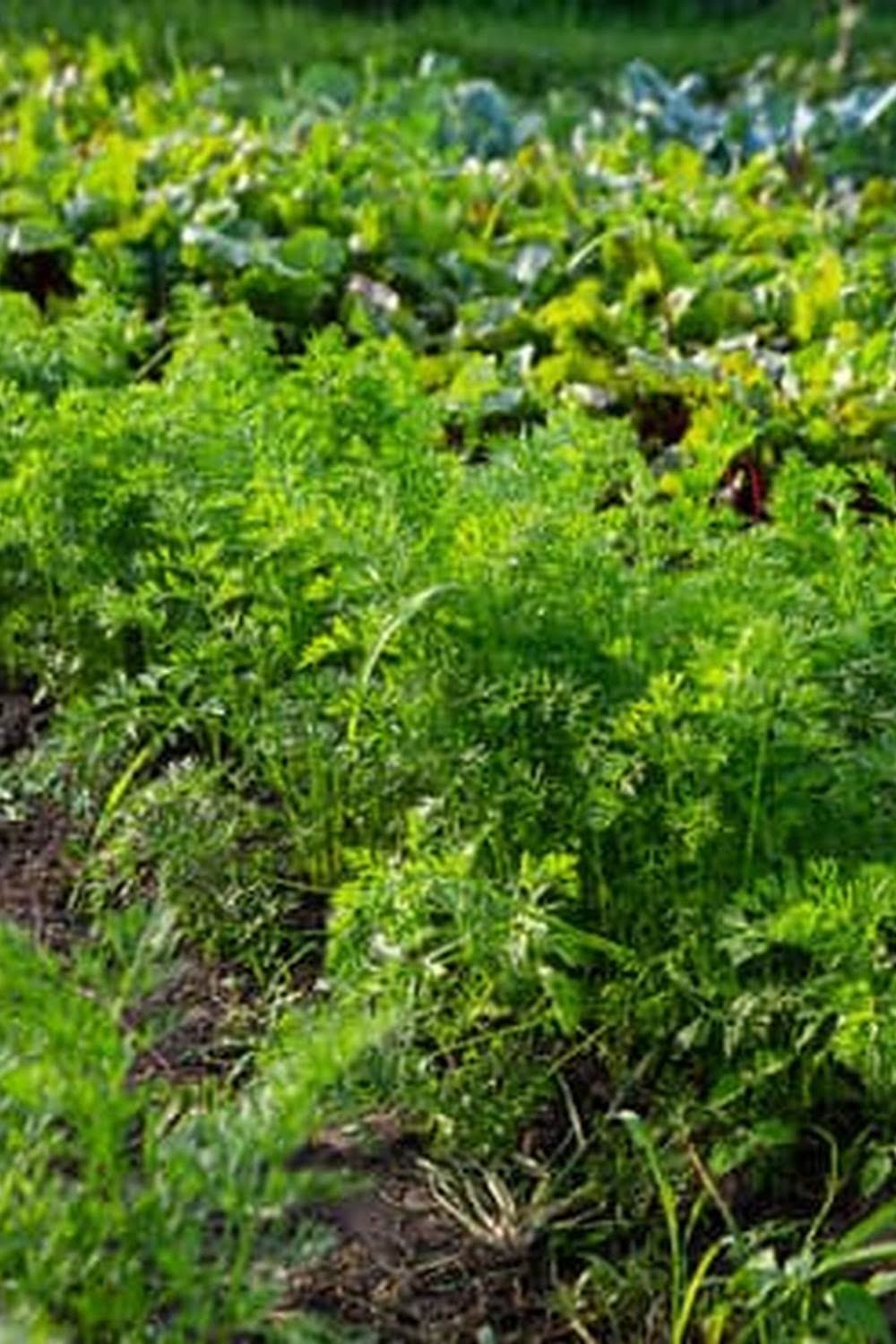Weed barriers play a crucial role in the overall maintenance and success of vegetable gardens. The use of weed barrier vegetable gardens can significantly reduce the time and effort spent on weeding, allowing gardeners to focus more on nurturing their vegetable crops. Beyond just saving time, weed barriers also help improve soil health, conserve moisture, and prevent competition for nutrients among plants.
By implementing a weed barrier in your vegetable garden, you can expect to see an increase in productivity and healthier crops. With fewer weeds competing for resources, your vegetables will have better access to sunlight, water, and essential nutrients, leading to higher yields and better quality produce. In addition to the direct benefits for your plants, weed barriers also contribute to creating a neat and organized garden space.
There are various types of weed barriers available for vegetable gardens, such as landscape fabric, mulch, and plastic sheets. Each type has its own set of advantages and considerations when it comes to installation and maintenance.
Understanding the differences between these options is essential for choosing the most suitable weed barrier for your specific gardening needs. In the following sections, we will delve deeper into the benefits of using weed barriers in vegetable gardens and provide insights on how to effectively install and maintain them.
Benefits of Weed Barrier in Vegetable Gardens
The use of weed barriers in vegetable gardens offers numerous benefits that can significantly improve the productivity of vegetable crops. One of the main advantages of using a weed barrier is its ability to suppress the growth of unwanted weeds, thus reducing competition for essential nutrients, water, and sunlight with your vegetable plants.
This not only helps in maintaining a clean and organized garden but also ensures that your vegetables have access to all necessary resources for their proper growth and development.
Moreover, by preventing weeds from taking over your vegetable garden, a weed barrier can also help in reducing the spread of pests and diseases that often thrive in weed-infested areas. This translates to healthier vegetable plants that are less susceptible to common garden problems, leading to higher yields and better quality produce.
Additionally, the use of a weed barrier can save you time and effort in ongoing weeding tasks, allowing you to focus on other important aspects of garden maintenance or simply relax and enjoy your thriving vegetable patch.
Incorporating a weed barrier into your vegetable garden design can also have long-term benefits by improving soil health and structure. By minimizing soil disturbance caused by frequent weeding, a weed barrier helps in preserving the natural ecosystem within the soil, promoting beneficial microorganisms’ growth while preventing erosion. This results in improved water retention, better drainage, and enhanced overall soil fertility – all contributing factors to healthy plant growth and abundant harvests.
| Benefits | Impact on Vegetable Garden |
|---|---|
| Weed Suppression | Reduces competition for resources |
| Pest & Disease Control | Decreases spread of pests & diseases |
| Soil Health Improvement | Promotes beneficial microorganisms & enhances fertility |
Types of Weed Barriers
Weed barriers are essential components in vegetable gardens that help in maintaining a clean and weed-free environment. There are various types of weed barriers available, each catering to different needs and preferences of gardeners. One popular option is landscape fabric, which is a permeable material that allows water and nutrients to reach the soil while preventing weeds from growing. Landscape fabric is durable and can last for several years if properly maintained.
Another common choice for weed barriers in vegetable gardens is mulch. Mulch not only helps in controlling weeds but also aids in retaining moisture in the soil, regulating soil temperature, and reducing erosion. Organic mulches like straw, wood chips, or leaves can decompose over time, enriching the soil with essential nutrients. Inorganic mulches such as plastic sheets offer long-term weed control by blocking sunlight and hindering weed growth.
Plastic sheets are another effective option for weed barriers in vegetable gardens. They create a physical barrier that prevents weeds from germinating and reaching the surface. Plastic sheets come in various thicknesses and colors, providing gardeners with choices based on their specific needs. Proper installation of plastic sheets is crucial to ensure adequate coverage and prevent weeds from penetrating through gaps or tears.
| Types of Weed Barriers | Description |
|---|---|
| Landscape Fabric | A permeable material allowing water & nutrients while blocking weeds |
| Mulch | Aids in moisture retention, temperature regulation & weed control |
| Plastic Sheets | Create a physical barrier blocking sunlight & hindering weed growth |
Installation of Weed Barriers
When it comes to maintaining a thriving vegetable garden, proper installation of weed barriers is essential. Installing weed barriers not only helps in controlling the growth of unwanted weeds but also aids in conserving moisture and preventing soil erosion. In order to maximize the effectiveness of weed barriers in vegetable gardens, following a step-by-step guide for installation is crucial.
Choosing the Right Type of Weed Barrier
Before beginning the installation process, it is important to select the appropriate type of weed barrier for your vegetable garden. Depending on your specific needs and budget, options such as landscape fabric, organic mulch, or plastic sheets can be utilized as effective weed barriers. Landscape fabric allows for water and air penetration while blocking out sunlight to prevent weed growth.
Organic mulch serves a dual purpose by providing nutrients to the soil as it decomposes while suppressing weed growth. Plastic sheets provide an impermeable barrier against weeds but may hinder water penetration if not properly installed.
Clearing the Area
The first step in installing a weed barrier in your vegetable garden is clearing the designated area of any existing weeds or debris. Remove all vegetation from the soil surface and ensure that the area is level and free of obstructions. This will help create a clean slate for laying down the weed barrier and prevent any interference with its effectiveness.
Laying Down the Weed Barrier
Once the area is cleared, carefully roll out the selected weed barrier material over the soil surface. Ensure that there are no gaps or overlaps between separate pieces of material to prevent weeds from finding their way through.
Secure the edges of the weed barrier with landscape staples or weights to hold it in place during windy conditions. Consider cutting out holes or slits in the material to accommodate existing plants or seeds that need to be planted in designated areas.
Maintenance of Weed Barriers
Weed barriers are a valuable tool in keeping vegetable gardens free of unwanted weeds, but proper maintenance is key to ensuring their effectiveness over time. To make the most out of your weed barrier investment, consider the following tips for maintaining and caring for your weed barriers:
- Regular Inspections: Periodically check your weed barriers for any signs of damage or wear. Look out for tears, holes, or areas where weeds may be starting to grow through.
- Replace Mulch or Landscape Fabric: If you notice that the mulch or landscape fabric used as a weed barrier is deteriorating, replace it promptly. This will help maintain its ability to suppress weed growth effectively.
- Clear Debris: Keep the area around your weed barriers clear of debris such as fallen leaves, twigs, or branches. Accumulated debris can attract pests and hinder the performance of the weed barrier.
In addition to regular maintenance tasks, it’s essential to address any issues that arise promptly to prevent further damage to your weed barriers. By staying proactive in caring for your weed barriers, you can enjoy a flourishing vegetable garden with minimal effort required to keep weeds at bay.
Remember that investing time and effort into maintaining your weed barriers will ultimately pay off in the form of a bountiful harvest from your vegetable garden. With proper care and attention, your weed barriers will continue to provide effective protection against weeds while promoting healthy growth for your vegetable crops.
Common Mistakes to Avoid
When it comes to maintaining a successful vegetable garden, using weed barriers can be a game-changer. However, there are common mistakes that gardeners often make when implementing weed barriers in their vegetable gardens. By being aware of these mistakes and knowing how to avoid them, you can ensure that your vegetable crops thrive while keeping weeds at bay.
One common mistake is not properly preparing the soil before installing the weed barrier. It is essential to thoroughly remove any existing weeds and loosen the soil to allow for proper drainage and aeration.
Failure to do so can lead to poor growth of your vegetable crops and even hinder the effectiveness of the weed barrier in preventing weed growth. To avoid this mistake, create a clean and well-prepared bed for your vegetable garden before laying down any weed barrier materials.
Another mistake that gardeners often make is using the wrong type of weed barrier for their vegetable gardens. With various options available, such as landscape fabric, mulch, and plastic sheets, choosing the right one is crucial for optimal results.
For example, landscape fabric may be more suitable for perennial vegetables like asparagus or strawberries, while plastic sheets are better for warm-season crops like tomatoes and peppers. Consider the specific needs of your vegetable plants and choose a weed barrier that aligns with those requirements.
Lastly, overlooking proper maintenance of weed barriers can also be a detrimental mistake. Over time, weeds may still find their way through or around the barrier if not properly maintained. Regularly check for any tears or holes in the material and promptly repair them.
Additionally, adding a layer of mulch on top of the weed barrier can provide extra protection against weeds and help retain moisture in the soil. By staying proactive in caring for your weed barrier, you can ensure its longevity and effectiveness in keeping your vegetable garden productive and free from unwanted weeds related to weed barrier vegetable gardens
- Failure to prepare soil adequately before installing
- Using the wrong type of weed barrier
- Neglecting proper maintenance of the weed barrier
Weed Barrier Alternatives
When it comes to controlling weeds in vegetable gardens, weed barriers are not the only solution. There are several alternative methods that can be just as effective in keeping unwanted plants at bay. These alternatives offer different approaches to weed control and may better suit the specific needs and preferences of gardeners.
Cultural Weed Control
One alternative to weed barriers is cultural weed control, which involves altering growing conditions or practices to suppress weed growth. This method includes techniques such as crop rotation, intercropping, and planting cover crops. By strategically planning what you plant and where you plant it, you can naturally reduce weed competition and minimize their presence in your vegetable garden.
Hand Weeding
Hand weeding is a labor-intensive but effective method for removing weeds from vegetable gardens without the use of barriers or chemicals. Regularly inspecting your garden beds and manually pulling out any emerging weeds can prevent them from taking over your crops. This hands-on approach allows for precise removal of weeds while also giving you an opportunity to monitor the health of your plants up close.
Mulching
Using organic mulch, such as straw, wood chips, or grass clippings, can serve as both a soil amendment and a natural weed barrier in vegetable gardens. Mulch helps retain moisture in the soil, suppress weed growth by blocking sunlight, and improve overall soil health. By applying a thick layer of mulch around your vegetable plants, you can create a protective barrier that also enriches the soil as it decomposes over time.
By exploring these alternatives to traditional weed barriers in vegetable gardens, you can find a method that aligns with your gardening style and goals. Whether you prefer a hands-on approach like hand weeding or opt for cultural practices like crop rotation, there are numerous options available for effectively managing weeds without relying solely on physical barriers.
Experimenting with different strategies may help you discover the best combination of techniques that work for your specific vegetable garden layout and maintenance routine.
Success Stories
In conclusion, the use of weed barriers in vegetable gardens has proven to be a game-changer for many gardeners looking to improve their harvests. By effectively suppressing weed growth, these barriers allow vegetable crops to thrive without competing for nutrients and water. The benefits of using weed barriers extend beyond just weed control, as they also help in maintaining soil moisture levels and reducing the need for frequent watering and weeding.
One key aspect that sets successful vegetable gardeners apart is the careful selection and installation of the right type of weed barrier. Whether it is landscape fabric, organic mulch, or plastic sheets, choosing the most suitable option for your garden can make a significant difference in the overall productivity of your crops. Proper installation techniques, such as ensuring adequate coverage and securing edges properly, are crucial for maximizing the effectiveness of weed barriers in vegetable gardens.
Furthermore, maintaining and caring for weed barriers is essential to ensure long-lasting protection against weeds. Regular inspections, occasional spot treatments, and proper storage during off-seasons are all important steps to take to keep your weed barrier functioning at its best.
By learning from success stories of experienced vegetable gardeners who have reaped the benefits of incorporating weed barriers into their gardening practices, you too can enhance the yield and quality of your harvest while minimizing the time and effort spent battling unwanted weeds in your vegetable garden.
Frequently Asked Questions
Should You Put Weed Barrier Under Vegetable Garden?
It is not necessary to put a weed barrier under a vegetable garden. While it can help prevent weeds from sprouting, it may also hinder the growth of vegetables by restricting root development and nutrient absorption.
What Is the Best Weed Barrier for Vegetable Garden?
The best weed barrier for a vegetable garden depends on personal preference and specific needs. Some popular options include landscape fabric, cardboard, newspaper, or mulch. Each has its pros and cons in terms of effectiveness and cost.
How Do You Use a Weed Mat in a Vegetable Garden?
To use a weed mat in a vegetable garden, start by clearing the area of any existing weeds. Lay the weed mat over the soil before planting your vegetables, making sure to cut holes for planting areas.
Secure the mat with staples or rocks to prevent it from shifting in wind or rain. Remember to monitor for any weeds that may still manage to grow through the barrier and remove them promptly.

If you’re looking to get into vegetable gardening, or are just looking for some tips on how to make your current garden better, then you’ve come to the right place! My name is Ethel and I have been gardening for years. In this blog, I’m going to share with you some of my best tips on how to create a successful vegetable garden.





